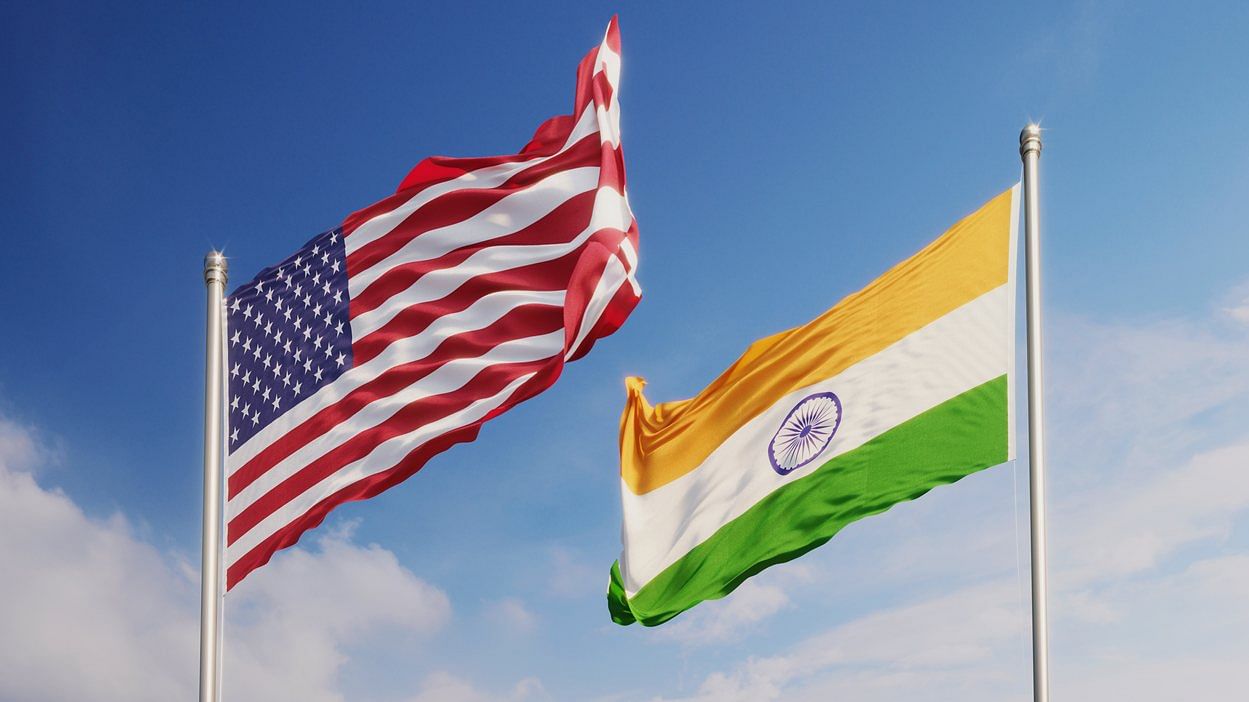
A United States warship of late sailed through the Exclusive Economic Zone of India in the Indian Ocean on April 7 last without requesting New Delhi’s prior consent and thus deliberately challenging its “excessive maritime claims”.
India lodged a protest with the United States over the incident, which struck a jarring note in the relations between the two nations. The Ministry of External Affairs (MEA) stated in New Delhi that the US warship had been continuously monitored when it had been passing through the Exclusive Economic Zone (EEZ) of India. It, however, did not mention if the Indian Navy had challenged the US warship at any point of time.
The USS John Paul Jones, a missile destroyer of the United States, “asserted navigational rights and freedoms” approximately 130 nautical miles west of Lakshadweep Islands, a Union Territory of India, on April 7 last, according to a press release issued by the 7th Fleet of the American Navy. The US warship did not request India’s permission before sailing through its Exclusive Economic Zone.
Also read — India conveys concern to US over warship carrying out navigation operations off Lakshadweep without consent
“India requires prior consent for military exercises or manoeuvrers in its exclusive economic zone or continental shelf, a claim inconsistent with international law,” the 7th Fleet of the US Navy stated. “This Freedom of Navigation Operation (FONOP) upheld the rights, freedoms, and lawful uses of the sea recognized in international law by challenging India’s excessive maritime claims.”
The US's move to challenge what it called “excessive maritime claims” of India came less than a month after Prime Minister Narendra Modi joined American President Joe Biden, Japanese Prime Minister Yoshihide Suga and Australian Prime Minister Scott Morrison met in the first summit of the ‘Quad’ – thus upgrading the coalition, which the four democracies revived in 2017 to counter the expansionist moves of China.
India and the US have longstanding differences over the interpretation of the United Nations Convention on the Law of the Sea (UNCLOS).
The statement issued by the MEA in New Delhi on Friday underlined the position of the Government of India that the UNCLOS did not authorise any nation to carry out military exercises or manoeuvres, particularly the ones involving the weapons and explosives, in the EEZ or the Continental Shelf of another nation without the consent of the second nation.
India clarified its position while ratifying the UNCLOS in 1995. The US, on the other hand, never ratified the UNCLOS at all.
A source in New Delhi stated that the US Navy ships had made forays into the EEZ of India in the past and even regularly reported the FONOPs in the annual reports, albeit not in 2018 and 2020. What however surprised the Government of India on Friday was that the US Navy had made the unusual move to go public and issue a press release on the April 7 FONOP carried out by the USS John Paul Jones and thus chose to embarrass New Delhi, notwithstanding growing defence cooperation between the two nations.
“The USS John Paul Jones was continuously monitored transiting from the Persian Gulf towards the Malacca Straits,” the MEA stated in its press release issued in New Delhi. “We have conveyed our concerns regarding this passage through our EEZ to the Government of the USA through diplomatic channels.”
The incident took place just three weeks after Biden’s Secretary of Defence, Lloyd Austin, visited New Delhi. Austin had a meeting with Defence Minister Rajnath Singh and the two sides agreed to “work together to realise the full potential of the India-US Comprehensive Global Strategic Partnership”.
The USS John Paul Jones in fact sailed through the EEZ of India on a day the American Navy’s amphibian transport dock USS Somerset concluded a joint exercise with the warships of the Indian, Australian, Japanese and French navies in the Bay of Bengal.
“The US forces operate in the Indo-Pacific region on a daily basis. All operations are designed in accordance with international law and demonstrate that the United States will fly, sail and operate wherever international law allows,” the 7th Fleet of the American Navy stated in the press release posted on its website.
“We conduct routine and regular Freedom of Navigation Operations (FONOPs), as we have done in the past and will continue to in the future. (The) FONOPs are not about one country, nor are they about making political statements,” it added.
The US Navy publicly challenged what it called “excessive maritime claims” of India even as New Delhi’s drift towards Washington D.C. in the wake of the stand-off between the Indian Army and the Chinese People’s Liberation Army (PLA) in eastern Ladakh over the past few months irked its ‘old friend’ Russia.
The USS John Paul Jones also carried out a FONOP on the same day challenging the excessive maritime claims of Maldives.
